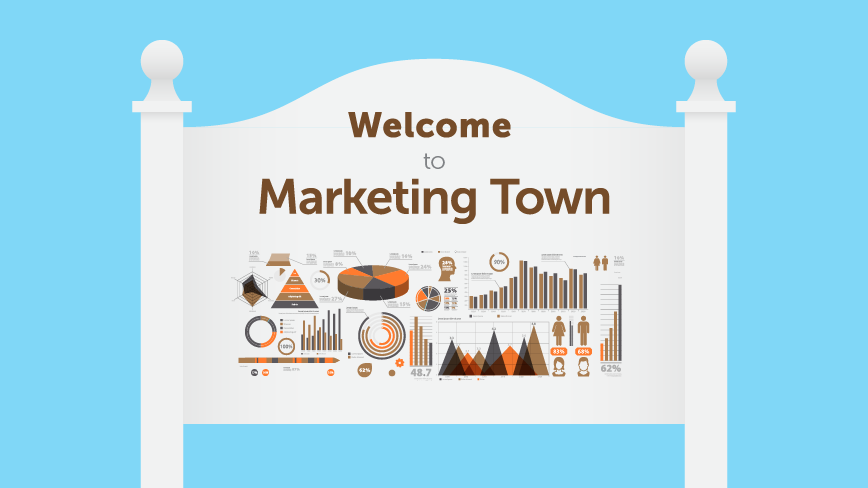Dive into the sophisticated ways that cities capitalize on using digital marketing techniques — just like how brands do — to promote tourism and create emotion-rich branded experiences.
Wanderlust is unsurprisingly on the rise. It seems now, more than ever, people are giving into this irresistible impulse to travel to near and far-off places. With the growing phenomenon to share and influence travel experiences through social media, people seem more motivated to capture and publically show off their adventures. Jealousy ensues.
So, how are cities capitalizing on the rise in wanderlust to boost their tourism and become the next Instagram-worthy destination? The answer lies in branding. Cities must learn to create an identity and market themselves like a brand in order to offer exclusive experiences that can only be fulfilled by visiting.
For decades, cities have been establishing their own iconic logos and slogans for branding. New York City’s infamous “I HEART NY” logo has become a cultural icon, and everyone knows, “What happens in Vegas, stays in Vegas.” Austin, which has become both a home and travel destination to an increasing amount of people, has adopted the now widely known slogan “Keep Austin Weird” based off of the city’s most prominent characteristics. This attitude has cultivated the city’s personality, growing their art scene, food and drink presence, and love of music.
Nowadays, cities of all sizes around the world are turning to digital tourism marketing. For instance, Camden, South Carolina has just over 7,000 residents, yet the city launched its own digital marketing campaign for tourism earlier this year. Using search engine optimization practices, the city’s tourism executives intend for its visitor site to appear first when people search for Camden or related terms. They also hope to engage and motivate incoming tourism traffic using social media hashtags, two Facebook pages, and an evolving set of campaigns on travel sites.
In other words, cities are learning to think like brands, and they are using digital marketing to help them accomplish their branding goals.
Experiential Marketing Taps into Emotions
To spark an emotional connection and stand out to consumers, some tourism boards and travel-related businesses are looking to emphasize unique experiences over tangibles. For example, travel agencies might state as a marketing point that if clients go to a certain destination, they will leave there with an experience of a lifetime.
The Singapore Tourism Board, for instance, began offering special “3 celebrations, 1 city” packages to Indian tourists so that they could celebrate holidays there. While they might cost more than standard travel packages, the unique emotional appeal they offer positions Singapore as a place to visit repeatedly.
The board also partnered with branded content collaborators to develop assets that highlighted the city’s culture. These assets included two feature film releases, digital and mobile snack-sized content, user-generated content (UGC), and partnerships with key influencers such as bloggers and photographers.
Segmentation Delivers Better Results
Aside from establishing a city’s brand identity and then converting cultural assets into an experience, tourism campaigns that want to develop higher conversion rates and more effective calls to action are reaching into segmentation research.
For instance, if a country’s tourism agency wants to realize new opportunities for international tourists to boost visitation and revenue, it could collect data to find out what has previously motivated people to visit their country. This data can then be used to categorize individuals into segments based on intent and target new audiences and/or retarget travelers appropriately.
Recognizing key segment opportunities in this way opens the floodgates for tailored campaigns that enhance the image of a region’s most important assets, relating to the varying audiences they are trying to speak to.
Social Media Drives Tourism Marketing
Social media has become the engine for many successful tourism campaigns, indicating the need for cities to identify their assets through social listening and UGC campaigns. For example, tourism board Discover Los Angeles launched its #EveryoneIsWelcome diversity campaign on Twitter and plans to roll out the campaign on social media outlets in Australia, Canada, China, Mexico, and the UK. The push uses the sort of imagery and emotional appeals found on popular Instagram accounts to highlight feel-good moments and encourage others to add to the paid assets with UGC.
By the same token, tourism boards and hospitality companies can gain advantages when they recognize the beneficial content that travelers create with their engaging photos or glowing reviews. “Ignoring social mentions is like turning your back on your front desk,” notes one travel blogger.
In conclusion, cities and tourism boards are using advanced digital marketing techniques to help turn their best assets into a type of branded experience, and then refine and control these images through collaborative content, segmentation strategies, UGC, and social listening.


Thanks for the link in your post about ignoring social mentions; I’m amazed how often it still happens. Lots of awareness work to do out there….